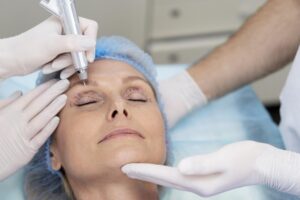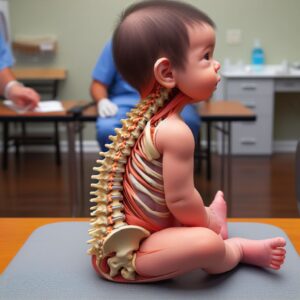500.00$
Iran Health Clinic offers top-quality healthcare services for individuals seeking Blepharoplasty surgery. Our experienced team of doctors specializes in cosmetic and plastic surgery, utilizing the most advanced techniques in the field. With a focus on patient safety and satisfaction, our team works closely with each patient to develop a customized treatment plan that meets their unique needs and goals. Our state-of-the-art facilities and equipment provide a comfortable and safe environment for our patients, while our experienced staff ensures the highest level of care and support throughout the entire treatment process. Whether you’re looking to restore your youthful appearance or address other concerns related to your eyelids, Iran Health Clinic is committed to providing the best possible outcome for your Blepharoplasty surgery.

Lower blepharoplasty is a surgical procedure that focuses on improving the appearance of the lower eyelids. It is commonly performed to address issues such as under-eye bags, excess skin, and fat deposits. Here is an overview of the procedure:
Incision Placement: The surgeon typically makes incisions either on the inside of the eyelid (transconjunctival approach) or just below the lower eyelashes (subciliary approach). The choice of incision placement depends on factors such as the patient’s anatomy and the specific goals of the surgery.
Fat Removal or Repositioning: In lower blepharoplasty, excess fat is often a primary concern. The surgeon may remove or reposition the fat to achieve a more youthful and rejuvenated appearance. This can help reduce the appearance of under-eye bags.
Muscle and Skin Adjustments: The surgeon may also make adjustments to the underlying muscles and remove any excess skin. This helps to tighten the lower eyelid area and improve its overall contour.
Additional Procedures: Depending on the patient’s specific needs, additional procedures may be performed during lower blepharoplasty. These can include canthoplasty or canthopexy, which involve tightening the outer corners of the eyes to improve support and stability.
Closure: Once the necessary adjustments have been made, the surgeon carefully closes the incisions with sutures. Dissolvable stitches are commonly used, eliminating the need for suture removal.
Lower blepharoplasty is suitable for individuals who have specific concerns related to their lower eyelids, such as:
Under-eye Bags: Lower blepharoplasty can address the appearance of puffy or bulging bags under the eyes, which can make a person look tired or aged.
Excess Skin: If there is loose or sagging skin in the lower eyelid area, lower blepharoplasty can help tighten and rejuvenate the skin, resulting in a more youthful appearance.
Fat Deposits: Lower blepharoplasty can remove or reposition excess fat deposits that contribute to the appearance of under-eye bags. This can create a smoother and more refreshed look.
Lower Eyelid Laxity: If the lower eyelids have laxity or droopiness, lower blepharoplasty can help tighten and restore the natural contour of the eyelids.
While lower blepharoplasty can be a suitable procedure for many individuals seeking to address specific concerns related to their lower eyelids, there are certain cases where it might not be recommended. Some situations where lower blepharoplasty may not be suitable include:
Poor General Health: Individuals with underlying health conditions that could increase the risks associated with surgery, such as uncontrolled diabetes, severe cardiovascular disease, or compromised immune function, may not be suitable candidates for lower blepharoplasty. It’s important to discuss your medical history and overall health with a qualified plastic surgeon to determine if the procedure is appropriate for you.
Unrealistic Expectations: If a person has unrealistic expectations about the outcomes of lower blepharoplasty or is seeking to achieve a dramatic and unnatural change in their appearance, the procedure may not be suitable. It’s important to have a thorough consultation with a plastic surgeon to discuss realistic goals and outcomes.
Active Eye Infections or Diseases: Individuals with active eye infections, such as conjunctivitis or other eye diseases, may need to postpone lower blepharoplasty until the infection or condition is resolved. The surgeon will evaluate the eye health and determine the suitability of the procedure.
Severe Dry Eye Syndrome: Lower blepharoplasty can potentially worsen dry eye symptoms in individuals who already have severe dry eye syndrome. The surgeon will assess the severity of the condition and determine if the procedure is appropriate or if alternative treatments should be considered.
Smoking or Tobacco Use: Smoking can impair the healing process and increase the risk of complications after surgery. Individuals who smoke or use tobacco products may be advised to quit or abstain for a certain period before and after the procedure. Failure to do so may make them unsuitable candidates for lower blepharoplasty.
Lower blepharoplasty offers several advantages for individuals seeking to improve the appearance of their lower eyelids. Here are some benefits associated with the procedure:
Reduction of Under-Eye Bags: Lower blepharoplasty can effectively address under-eye bags caused by excess fat deposits or sagging skin. By removing or repositioning the fat, the procedure can create a smoother and more rejuvenated appearance.
Improved Contour and Tightening: The surgery allows for the adjustment of the underlying muscles and removal of excess skin, resulting in a tighter and more youthful contour of the lower eyelids.
Enhanced Appearance: Lower blepharoplasty can make the eyes appear more alert, refreshed, and youthful. It can help reduce the tired or aged appearance associated with under-eye bags and sagging skin.
Improved Field of Vision: In cases where severely sagging skin around the eyes impairs peripheral vision, lower blepharoplasty can help alleviate this issue by removing the excess skin and improving the field of vision.
Long-Lasting Results: Lower blepharoplasty typically provides long-lasting results. While the aging process continues, the benefits of the procedure can be enjoyed for many years, often ranging from 10 to 15 years.
Minimal Scarring: The incisions made during lower blepharoplasty are carefully placed in natural folds or under the lash line, resulting in minimal scarring. This allows for a more discreet and aesthetically pleasing outcome.
Lower blepharoplasty, like any surgical procedure, carries potential risks and complications. It’s important to be aware of these possibilities before undergoing the surgery. Here are some complications that can occur with lower blepharoplasty:
Hematoma: In rare cases, a collection of blood (hematoma) can form under the skin, causing swelling, pain, and potential disruption of the healing process. Proper surgical technique and postoperative care can help minimize the risk of hematoma formation 1.
Chemosis: Chemosis refers to swelling of the conjunctiva, the clear tissue that covers the white part of the eye. It can occur after lower blepharoplasty and may cause discomfort or temporary blurred vision. The condition typically resolves on its own, but medical treatment may be necessary in some cases 1.
Canthoplasty Complications: Canthoplasty is a procedure sometimes performed in conjunction with lower blepharoplasty to tighten the outer corners of the eyes. Complications associated with canthoplasty can include malposition of the lower eyelid, such as retraction (pulling down) or ectropion (outward turning) of the eyelid 1.
Scarring: While efforts are made to minimize scarring, there is a possibility of visible scarring after lower blepharoplasty. The extent and visibility of scarring can vary depending on individual factors and surgical techniques used.
Eyelid Malposition: Lower blepharoplasty can occasionally result in eyelid malposition, such as lower eyelid retraction (a low-positioned eyelid that is tethered to the orbital rim) or ectropion (outward turning of the eyelid). These complications may require additional treatment or revision surgery 2.
Dry Eyes: Some individuals may experience temporary or prolonged dryness of the eyes after lower blepharoplasty. This can cause discomfort and may require the use of lubricating eye drops or other treatments.
The preoperative care for lower blepharoplasty typically includes the following:
Consultation and Evaluation: You will have a consultation with a qualified plastic surgeon who specializes in blepharoplasty. During this consultation, the surgeon will evaluate your specific concerns, discuss your goals, and assess your overall health and medical history.
Medical Evaluation: A complete ophthalmologic examination may be performed to assess your eye health, visual acuity, and any potential issues that may affect the surgery or recovery process.
Discussion of Expectations: The surgeon will discuss the expected outcomes of the procedure, potential risks and complications, and any limitations or restrictions that may apply during the recovery period. It’s important to have realistic expectations and a clear understanding of the procedure.
Preoperative Instructions: You will receive specific instructions to follow before the surgery. These may include guidelines on medications to avoid, such as blood-thinning medications, herbal supplements, and non-steroidal anti-inflammatory drugs (NSAIDs), as they can increase the risk of bleeding during and after surgery. You may also be advised to stop smoking, as it can impair the healing process.
Arrangements for Postoperative Care: It’s important to arrange for someone to accompany you to the surgery and stay with you for the first 24 hours after the procedure, especially if sedation or a facelift is involved. Professional nursing care may be recommended if a facelift is performed in addition to the blepharoplasty.
Preparation for Recovery: You may be advised to make certain preparations for the recovery period, such as having cold compresses, eye drops, and gauze available at home. It’s also important to have a quiet and peaceful environment for rest during the initial days after surgery.
The postoperative care following lower blepharoplasty typically includes the following guidelines:
Wearing Sunglasses: After the surgery, it is recommended to wear dark sunglasses during your trip home as you may be sensitive to light 1.
Vision Blurriness: The ointment used during the surgery may cause temporary blurry vision, which usually resolves within 24 hours.
Avoiding Contact Lenses: It is advised not to wear contact lenses for at least two weeks after the surgery. However, you can wear eyeglasses during this time 1.
Driving Restrictions: It’s important not to drive until you have stopped taking pain medication, your vision is no longer blurry, and you can safely and comfortably drive a car. This typically takes about 5 to 10 days after the surgery 1.
Rest and Avoidance of Activities: It’s crucial to get quiet and peaceful rest during the first 3 to 4 days after the surgery. Avoid activities such as heavy lifting and exercise during this initial recovery period 1.
Follow-up Appointments: Suture removal typically occurs at two different appointments between 2 and 7 days after the surgery Your surgeon will provide specific instructions regarding follow-up care and appointments.
Swelling and Bruising: Swelling and bruising are normal after lower blepharoplasty. The severity and duration of swelling and bruising can vary from person to person. Typically, moderate swelling and bruising improve within 1-2 weeks for upper eyelid blepharoplasty and 2-4 weeks for upper and lower eyelid blepharoplasty 2. Applying cold compresses can help reduce swelling.
Eye Care: It’s normal to experience dryness or irritation in the eyes after the surgery. Over-the-counter artificial tear drops can be used to alleviate discomfort. Take care not to manipulate the eyelids when instilling eye drops 3.
Incision Care: Incisions made during the surgery will fade over time, usually within 4-6 months It’s important to keep the wounds clean to prevent infection. Avoid rubbing or manipulating the incisions 3.
Only logged in customers who have purchased this product may leave a review.






 Blepharoplasty is a surgical procedure that involves the removal of excess skin, fat, and muscles from the eyelids, in order to improve their appearance and function. This procedure can be performed on the upper and lower eyelids, and may be done for cosmetic or medical reasons. Signs that a blepharoplasty may be necessary include droopy eyelids, bags under the eyes, excess skin around the eyes, and difficulty opening the eyes fully. Blepharoplasty is typically performed under local anesthesia, and patients can usually return home on the same day as the procedure. Recovery time typically ranges from a few days to a week, during which patients will need to avoid strenuous activities and may need to use ice packs to reduce swelling. It is important to make sure that you choose a skilled and experienced surgeon if you are considering blepharoplasty.
Blepharoplasty is a surgical procedure that involves the removal of excess skin, fat, and muscles from the eyelids, in order to improve their appearance and function. This procedure can be performed on the upper and lower eyelids, and may be done for cosmetic or medical reasons. Signs that a blepharoplasty may be necessary include droopy eyelids, bags under the eyes, excess skin around the eyes, and difficulty opening the eyes fully. Blepharoplasty is typically performed under local anesthesia, and patients can usually return home on the same day as the procedure. Recovery time typically ranges from a few days to a week, during which patients will need to avoid strenuous activities and may need to use ice packs to reduce swelling. It is important to make sure that you choose a skilled and experienced surgeon if you are considering blepharoplasty.Blepharoplasty is suitable for individuals who have excess skin, muscle or fat in their upper or lower eyelids, which can make the eyes appear tired, droopy or puffy. It is generally recommended for people over the age of 35, as this is when signs of aging around the eyes often become more apparent. Blepharoplasty can help reduce the appearance of wrinkles, fine lines and dark circles under the eyes, as well as improve vision for those whose sagging upper lids obstruct their vision.
While blepharoplasty can be a great option for many people, it may not be suitable for everyone. Patients who have certain medical conditions, such as dry eye syndrome, thyroid problems, or high blood pressure, may not be good candidates for the surgery. Additionally, if a patient has an eye infection, an active eye disease, or other serious medical condition, it is important to wait until these conditions are resolved before considering blepharoplasty. It is also essential for patients to have realistic expectations about the results of the surgery and to be in overall good health before undergoing the procedure, as this can help to improve the chances of a successful outcome.
The following are some advantages of blepharoplasty:
1. Improved appearance: Blepharoplasty helps to remove wrinkles, eye bags, and puffiness around the eyes, making the eyes look younger and more refreshed.
2. Better vision: In some cases, sagging upper eyelids can obstruct a person’s vision. Blepharoplasty can remove this excess skin, thereby improving their vision.
3. Boosts self-confidence: A refreshed appearance can help boost one’s self-confidence. This can lead to better personal and professional relationships.
4. Long-lasting results: The results of blepharoplasty are long-lasting, with most patients experiencing the effects of the procedure for ten to fifteen years.
5. Minimally invasive: Blepharoplasty is a minimally invasive procedure with a short recovery time, allowing patients to return to normal activities quickly.
Like any surgical procedure, blepharoplasty can come with certain risks and complications. Some of these complications include infection, bleeding, scarring, problems with vision, dry eyes, difficulty closing the eyes completely, prolonged swelling, and asymmetry in the appearance of the eyes. Patients who have certain medical conditions such as dry eye syndrome, thyroid problems, or high blood pressure may be at a greater risk of experiencing complications. It is important for patients to thoroughly discuss their medical history with their surgeon and follow all pre and post-operative instructions carefully to minimize risks and complications.
Before undergoing blepharoplasty, it is important to care for oneself to ensure a smooth and successful procedure.
One of the most important steps is to quit smoking at least two weeks before the surgery and for several weeks afterward to promote proper healing. It is also recommended to avoid alcohol, aspirin, and ibuprofen for two weeks prior to the procedure to reduce the risk of bleeding. It is essential to inform the surgeon of any medications or supplements being taken to determine whether they may affect the outcome of the surgery. It is also crucial to maintain a healthy diet and exercise routine to promote proper recovery.
Lastly, it is recommended to arrange for transportation and help after the surgery, as vision may be blurry and eye movement may be limited for a few days.
After the surgery, it is important to follow specific aftercare instructions to promote healing and reduce the risk of complications. These instructions may include taking prescribed pain medications, avoiding strenuous activities for a few weeks, using ice packs to control swelling, and keeping the head elevated while sleeping. Patients should also avoid smoking and drinking alcohol, as it can impair the healing process. It is essential to attend all follow-up appointments with the surgeon to ensure proper healing and to address any concerns that may arise. Patients should notify their surgeon immediately of any unexpected symptoms, such as increased pain, fever, or excessive bleeding or drainage. With proper aftercare, most patients can expect to return to their normal routine within two to four weeks following their blepharoplasty.
There are no reviews yet.
Only logged in customers who have purchased this product may leave a review.
Choosing the right hospital and physician are important factors to consider that significantly influence a patient’s treatment. The preferred choice for many patients is choosing private care.
Choosing the right hospital and physician are important factors to consider that significantly influence a patient’s treatment.
Reviews
There are no reviews yet.